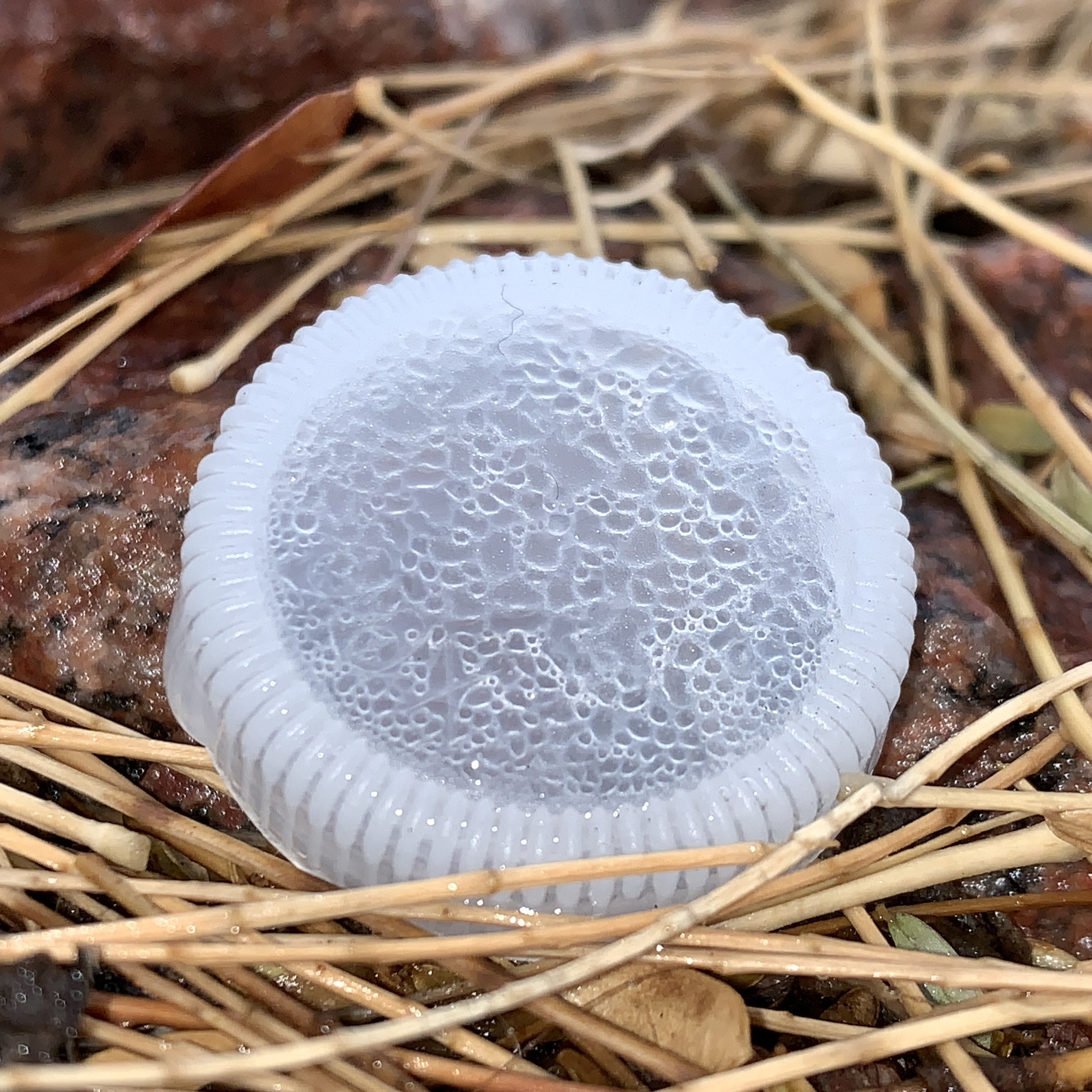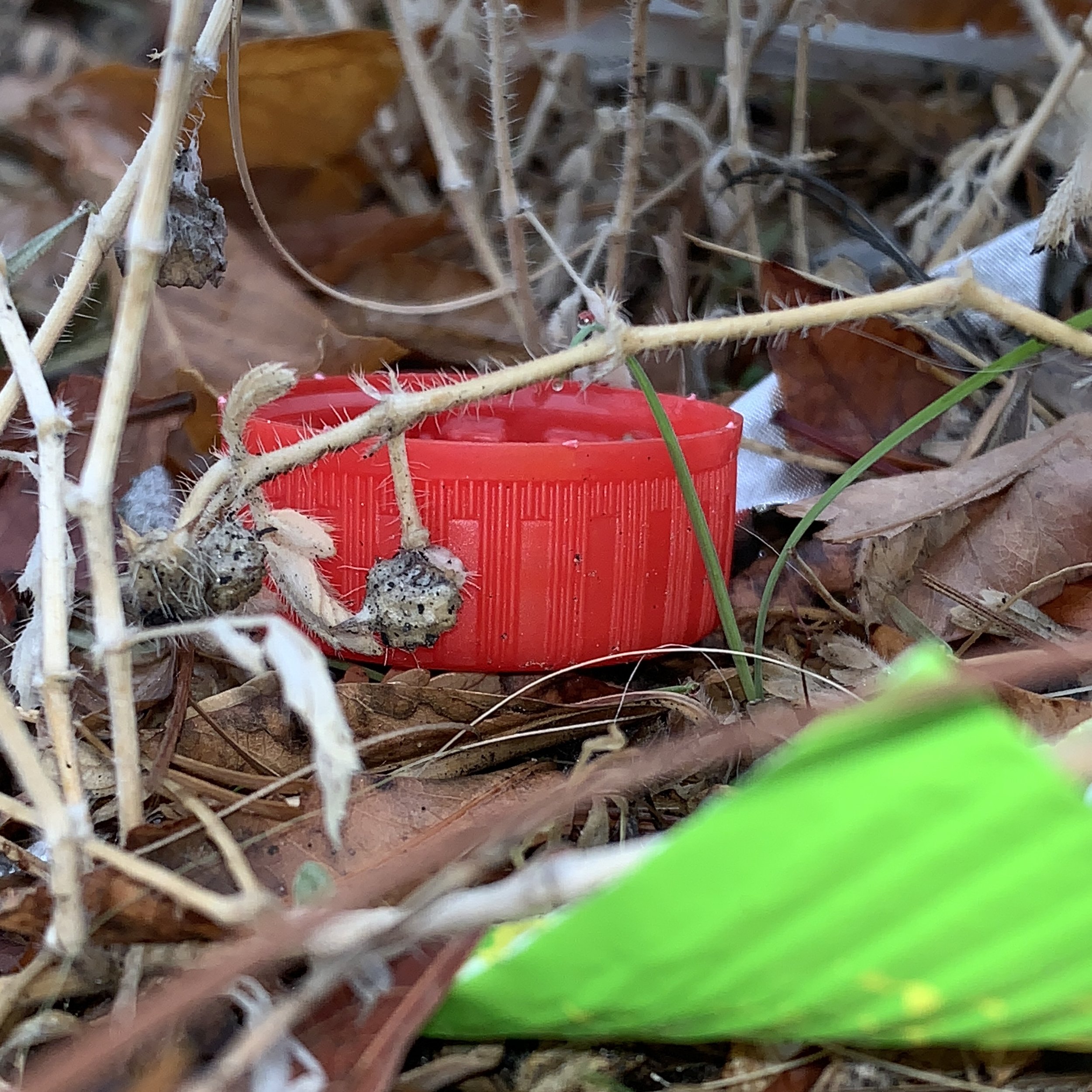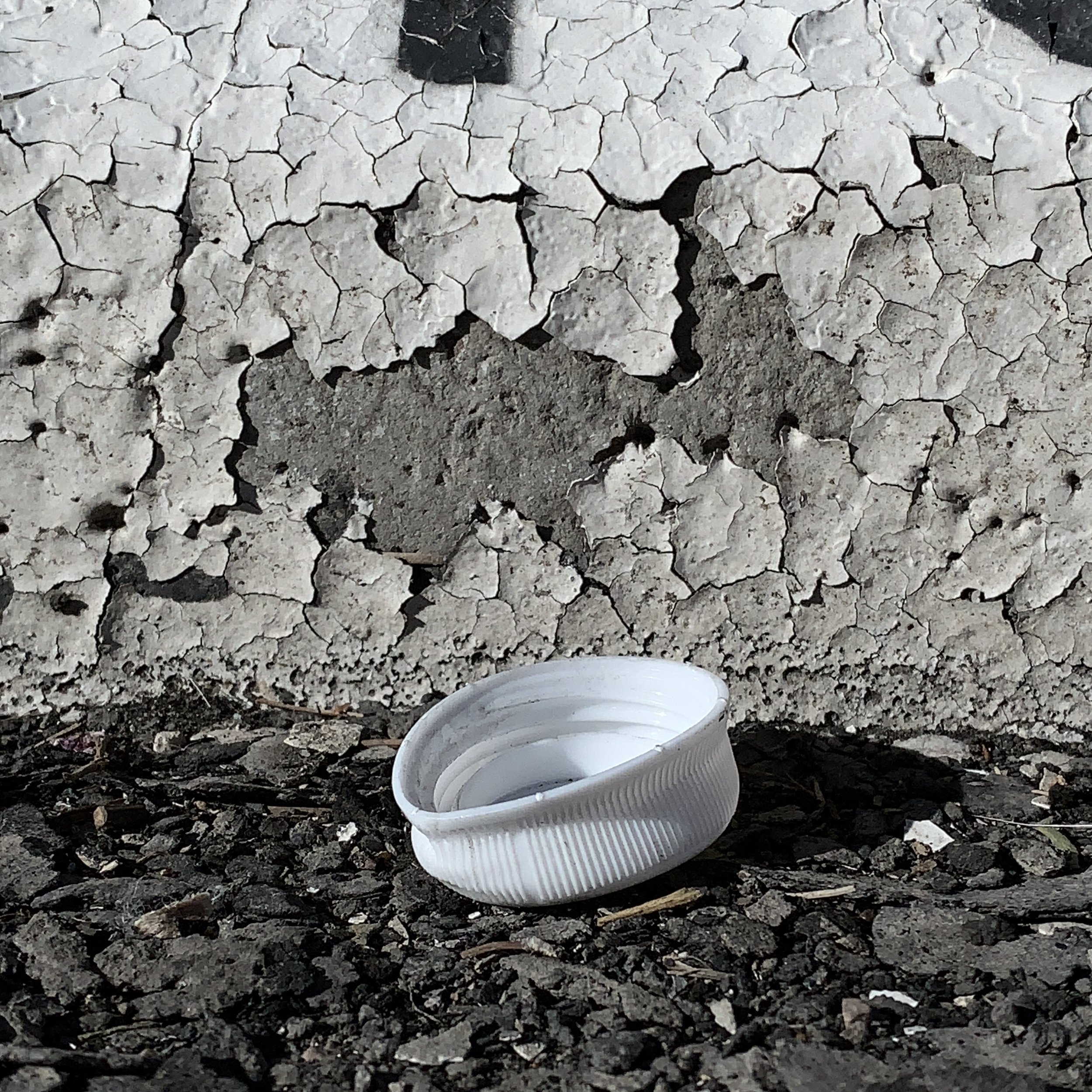What Are You Working On Now? Deanne Sole
A Number of Metal Bottle Caps Covered in Tinfoil (detail), 2023, bottle caps, tinfoil. Installed at Stone Soup. Photo: Shahab Zargari.
What are you working on now? is a Couch in the Desert series where we ask artists what they are making and thinking about in and outside the studio.
Deanne Sole
So, what am I working on now?
Now – in other words November 9th, 2023, which means this will be out of date by the time anyone reads it – now I’ve set other things aside to cover metal bottle caps in tinfoil for Stone Soup, an event taking place in the desert on Saturday. According to the vision in my head they will be a carpet of glittering spots on the dry dirt, running up and down rocks and dips, if there are rocks and dips. At close range they will have a multitude of tiny variations: the ruffled edges will be crushed in one and straight in another, etc. None of the bottle caps are new; they were all found on the ground, secondhand, mashed, driven over, flattened. The tinfoil replaces their branded characters with a mirror. So there’s that. In the past I’ve combined metal bottle caps with plastic ones but if nature decides to be windy then the metal ones are less likely to blow away. Typically I do these in batches of one thousand, but this is a special set for this event. They asked us to tell them how much space we needed and my brain went, ur, whatever: three feet by three feet? I have no idea, -- three feet then! -- so I’m making enough to look OK in an area of dirt three feet by three feet. We’ll see.
I haven’t said anything about the event on social media, which makes me feel guilty, as if I’m not being very much help to the organizers. I also feel bad for using “which” in the previous sentence because Dorothy Richardson, who, I think, wrote something outstanding with the Pilgrimage books, told herself never to use “which” like that. At least I believe she did. It’s not in Pilgrimage but I think she said it somewhere. Regardless, now I can’t use “which” in that way without feeling sorry for myself. One of the things I am doing on social media is a daily bottle cap post on Instagram Stories. Every morning I post a photograph of a bottle cap I’ve found in the wild. “The wild” means a gutter, a stony verge, a car park, a garden bed, somewhere out there. I am trying to think of other ways to show these in the future. Should I work with masses, like the Bechers, or single them out in a book, one per page, like Ed Ruscha’s gas stations? For now, they are just on Instagram. I have to lump down on the ground to take the photos but people, interestingly, don’t tend to comment, aside from one student who saw me down a shallow depression in the concrete in the middle of campus and asked if I was all right. The depression is floored with metal. There must be something down there. There I was, floating above it on a carpet of metal, photographing a bottle cap. Are you all right, he said. An excellent question on the whole. *
So I fool around with the idea of transforming something by doing something simple to it. Picking a bottle cap up is simple, putting tinfoil on it is simple, and accumulating a mass of them is simple, even fairly boring. But can I do these things in a way that makes the bottle caps somehow stop being rubbish? I tell myself that a thousand photographs of bottle caps, two thousand photos, will acquire so much gravity or distinction that people will get a little dizzy. There’s a quality that I’m trying to get to and every now and then I will see something and think, “Yes, like that.” I thought it when I came across Agostino Carracci’s 1600-02 drawing of a Seated Male Nude in the online archive of the collection of the National Gallery of Art in Washington, D.C. (wreaths of lines wound around the chest like a torso made of scarves) but I also think it sometimes when I see the drawings people leave behind at the Art Bar at work. Usually, I want to do something that is “like” two or three things at once and they’re not always compatible, in fact they’re often not compatible at all, no, they’re actively contradictory. Or I want to make exactly what someone else has made but they’ve already made it, like the drawings by Agnes Scherer that I saw at Bel Ami last September, or Manoel de Oliveira’s Francisca. When I saw Francisca I was melancholy because I immediately felt within me the power of making it which is nonsense because I am not even a filmmaker. It would be impossible.
Trying out something with Fresh Bone-In Whole Pork Legs from Marketon Circulars.
A Sample of Doubled Fresh Bone-In Whole Pork Legs Collected from Marketon Circulars.
Update in 2024: the bottle caps in the desert at Stone Soup reflected the sky, changing from blue flares during the day to black dots at night, a bit of unexpected natural magic that I hope to do more with in the future. I’ve also been trying different things with supermarket circulars. Marketon used to always have a picture of two pork legs that would appear in slightly different configurations, but early this year they hired a new graphic designer or the old one had a creative breakthrough or something and subsequently, I had to stop collecting them because one pork leg on its own is not so exciting. I have at least fifty double pork legs.
*I went back and checked and they’ve covered it in concrete so it’s not a depression anymore.
Originally from Melbourne, Australia, D.K. Sole has degrees in Literature and Film from Deakin University and the Victorian College of the Arts. She joined the Barrick Museum after moving to Las Vegas in 2012. Sole works in education and research, managing tours and writing many of the museum’s text materials. She curated the Barrick’s 2017 group exhibition, Play On, Gary, Play On. An artist who works with found objects, she has exhibited in Las Vegas and Denver, CO.
See more of D.K.’s work on her Instagram.
Images courtesy of the artist and Shahab Zargari.
Posted and published by Lyssa Park on April 14, 2024.










